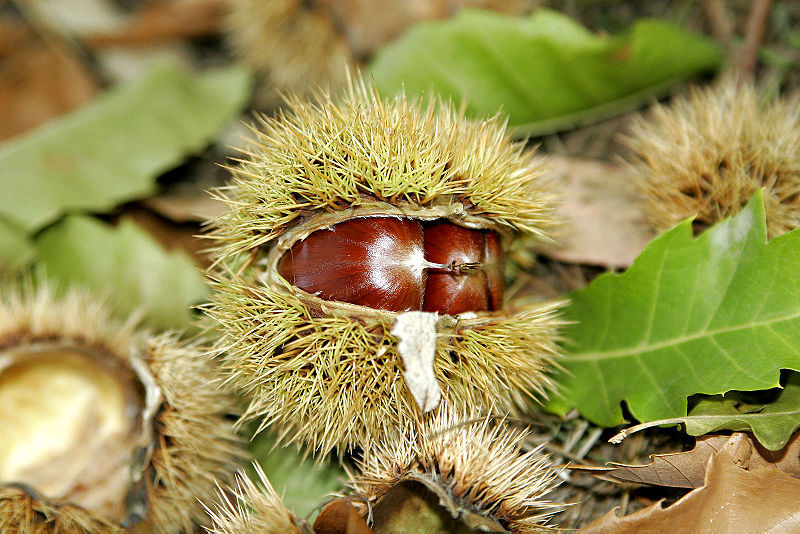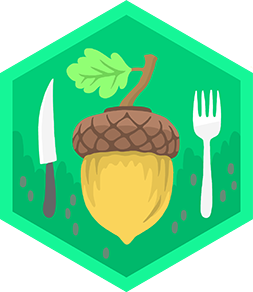Forage for food
With adult supervision, learn to identify and gather common edible plants (dandelions, clover, berries), use a guidebook, and prepare a simple washed snack.



Step-by-step guide to forage for food
Wild Edibles with Sergei Boutenko | Learn How to Forage for 25 Tasty Plants
Step 1
Ask an adult for permission and decide together where you will safely forage.
Step 2
Put on closed-toe shoes and long pants to protect your feet and legs.
Step 3
Gather your guidebook basket scissors and gloves and take them with you.
Step 4
Walk to the chosen area with your adult and look for dandelions clover and berry plants.
Step 5
Avoid picking anything that grows near roads lawns that may be treated with pesticides or near animal droppings.
Step 6
Use your guidebook to compare leaves flowers and stem shapes to confirm a plant is a safe edible like dandelion clover or ripe berries.
Step 7
Ask your adult to double-check each plant in the guidebook before you pick it.
Step 8
With your adult's help pick only a small amount of the confirmed edible parts and leave roots so the plants can grow back.
Step 9
Put the picked plants in your basket and do not mix in any unknown plants.
Step 10
Rinse the plants under cold running water using the colander to remove dirt and tiny insects.
Step 11
Pat the plants dry with paper towels or let them air dry in the colander.
Step 12
With your adult mix the washed leaves and berries in a bowl to make a simple snack.
Step 13
Try a tiny bite only after your adult says it is safe and wait several minutes to check for any reaction.
Step 14
Clean up by putting tools away and composting or throwing away scraps responsibly.
Step 15
Share your finished creation on DIY.org.
Final steps
You're almost there! Complete all the steps, bring your creation to life, post it, and conquer the challenge!


Help!?
If we don't have a printed guidebook or a colander, what can we use instead?
Use a reputable plant‑ID app or trusted online photos and have your adult double‑check before picking, and rinse picked plants in a clean bowl and strain them through a kitchen sieve or clean tea towel instead of a colander.
What should we do if a plant looks like a dandelion but we're not completely sure it's safe?
Don't pick it; follow the instructions to compare leaves, flowers, and stem shapes in the guidebook with your adult and only pick a small amount of the confirmed edible parts once both of you agree.
How can we adapt this for younger children or older kids?
For younger children, have the adult lead the walk, handle scissors and do the ID and picking while the child observes and helps rinse, and for older kids let them use the guidebook, gloves, and scissors to identify and pick under adult supervision and mix the snack themselves in the bowl.
How can we extend or personalize the foraging activity after making the snack?
Create a photo field journal and press a few leaves in a notebook, try simple toppings in the bowl like a drizzle of honey or lemon, and then share the finished creation on DIY.org.
Watch videos on how to forage for food
11 Easy Edible Plants for Beginner Foragers- Eating Wild Food
Facts about foraging and plant identification
📚 A good field guide shows photos, range maps, season tips, and warnings about poisonous look‑alikes to keep you safe.
🧼 Always wash foraged foods thoroughly and avoid plants from treated lawns, busy roadsides, or areas with possible contamination.
🍀 Clover leaves and flowers are edible and were traditionally added to salads and herbal teas for extra vitamins.
🌼 Dandelions are completely edible — leaves, flowers, and roots have been used in salads, teas, and even coffee substitutes.
🍓 Not all wild berries are safe — some poisonous berries look very similar to tasty ones, so always double-check before eating.
How do I teach my child to forage for edible plants and make a simple washed snack?
What materials do we need to forage for dandelions, clover, and berries with kids?
What ages are appropriate for supervised foraging with children?
What safety tips and benefits should I know before foraging with my child?


One subscription, many ways to play and learn.
Only $6.99 after trial. No credit card required



